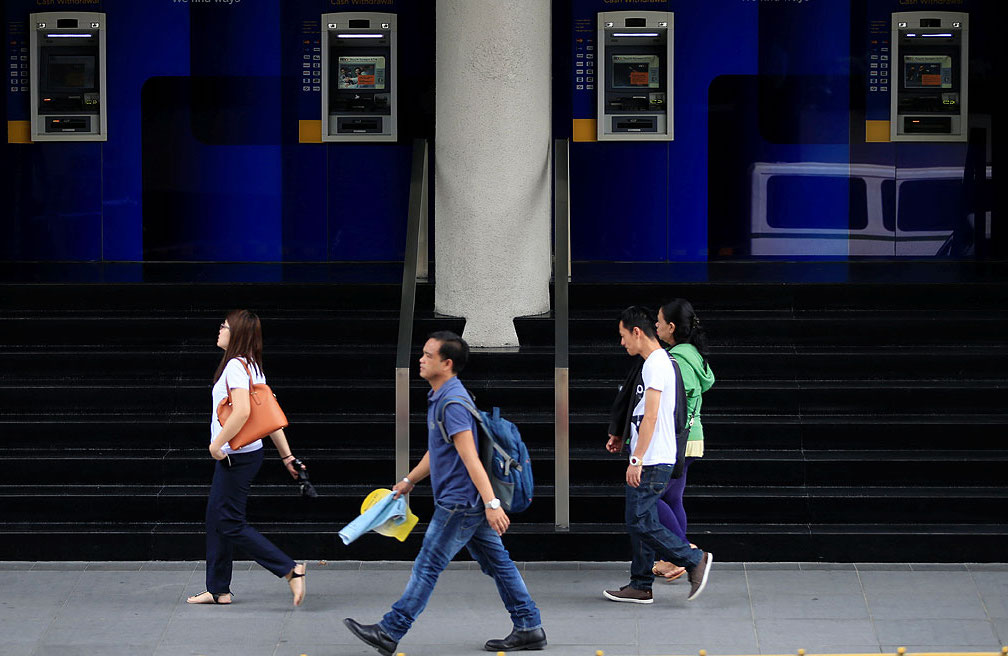




Philippines Trade Update: Trade trajectories trend along
 DOWNLOAD
DOWNLOAD

Policy Rate Updates: Double cut finale
 DOWNLOAD
DOWNLOAD

Monthly Economic Update: One for the road
 DOWNLOAD
DOWNLOAD


Philippines’ big banks saw slower asset growth in fourth quarter

The Philippines’ big banks saw slower growth in total assets in the fourth quarter of 2023, while loans grew the fastest in three quarters despite high interest rates.
The latest edition of BusinessWorld’s quarterly banking report showed the combined assets of 43 universal and commercial banks rose by 7.6% year on year to PHP 24.21 trillion in the October-to-December period from PHP 22.51 trillion a year earlier.
Asset growth eased from the 8.78% seen in the third quarter of 2023, and the slowest in seven quarters or since 7.37% in the first quarter of 2022.
Meanwhile, total loans jumped by 10.22% to PHP 12.28 trillion in the fourth quarter from PHP 11.14 trillion in the same quarter in 2022. It was also faster than the 7.01% growth in the third quarter.
The loan growth during the fourth quarter was the fastest in three quarters or since 10.84% increase in the first quarter of 2023.
Banks saw an increase in loans despite the high interest rate environment.
The Bangko Sentral ng Pilipinas (BSP) raised benchmark interest rates by a cumulative 450 basis points between May 2022 and October 2023 to tame soaring inflation. The central bank has kept the key rate at a near 17-year high of 6.5% since then.
On an annual basis, the banks’ median return on equity (RoE) jumped to 9.29% from 6.36% in the same period a year ago. It was slightly higher than the 9.28% in the third quarter.
RoE, an index of profitability, is the ratio of net profit to average capital and it measures the amount shareholders earn from their investments in a company.
Meanwhile, the share of bad loans to the total loan portfolio, also known as the nonperforming loan ratio, inched up to 3.39% from 3.28% a quarter ago. This was also higher than 3.17% in 2022.
Loans are classified as nonperforming if there is principal or interest left unpaid for more than 90 days beyond the due date.
The median capital adequacy ratio — the ability to absorb losses from risk-weighted assets — rose to 20.17% from 17.97% a year ago. This was lower than the 21.54% in the previous quarter.
The ratio remained above the 10% regulatory minimum set by the BSP as well as the international minimum standard of 8% set under the Basel III framework.
The leverage ratio, which gauges the institution’s ability to absorb shocks by measuring the bank’s capital relative to total exposure, reached a median of 10.91% in the fourth quarter, higher than 10.86% in the third quarter. This exceeded the central bank’s 5% guideline as well as the international standard of 3%.
The net interest margin (NIM) of banks also inched up to 3.86% in the fourth quarter from 3.71% in the previous quarter. NIM is an indicator of banks’ investing efficiency by dividing annualized net interest income by average earning assets.
Meanwhile, return of assets (RoA), which measures the profit generated per peso of an asset, slipped to 1.46% from 1.51% in the third quarter.
The leverage ratio, NIM, and RoA were new inclusions in the banks’ fourth-quarter financial reports following BSP’s amended guidelines on publishing balance sheets for lenders.
Sy-led BDO Unibank, Inc. (BDO) remained the biggest bank based on total assets with PHP 4.4 trillion, followed by Metropolitan Bank & Trust Co. (Metrobank) with PHP 3.38 trillion and Land Bank of The Philippines (LANDBANK) with PHP 3.29 trillion.
By loans issued, the top three were BDO with PHP 2.85 trillion, followed by Bank of the Philippine Islands with PHP 1.93 trillion and Metrobank with PHP 1.55 trillion.
BDO also had the highest total deposits with PHP 3.56 trillion. Trailing behind were LANDBANK and Metrobank with PHP 2.9 trillion and PHP 2.38 trillion, respectively.
Among banks with at least P100 billion in assets, Maybank Philippines, Inc. (Maybank) had the fastest year-on-year increase of 26.69%. Closely trailing were MUFG Bank, Ltd. with 23.99% growth and China Banking Corp. with 18.24%.
Philippine Trust Co. recorded the fastest annual loan growth at 36.78% in the last quarter of 2023, followed by Maybank with 26.24% and the Philippine Bank of Communications with 23.06%.
BusinessWorld Research has been tracking the financial performance of the country’s biggest banks every quarter since the late 1980s using the bank’s published statement of conditions. — Andrea C. Abestano
This article originally appeared on bworldonline.com





 By BusinessWorld
By BusinessWorld
